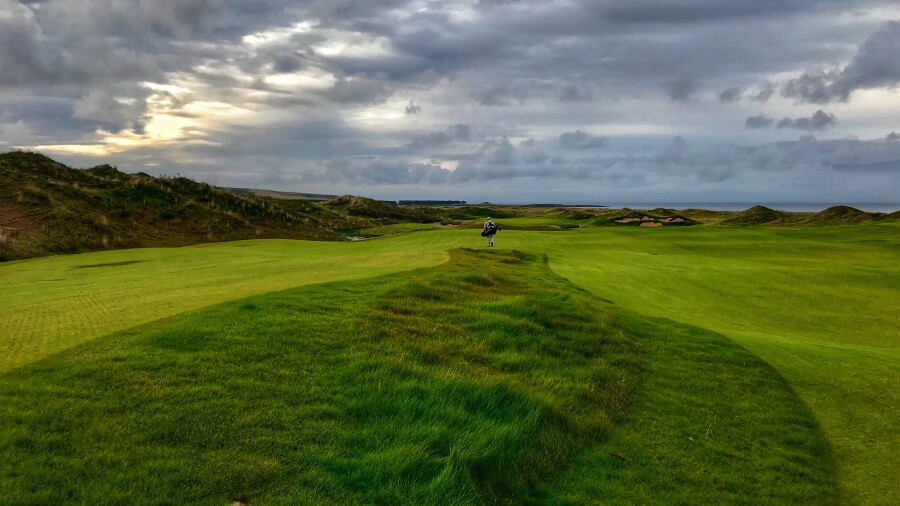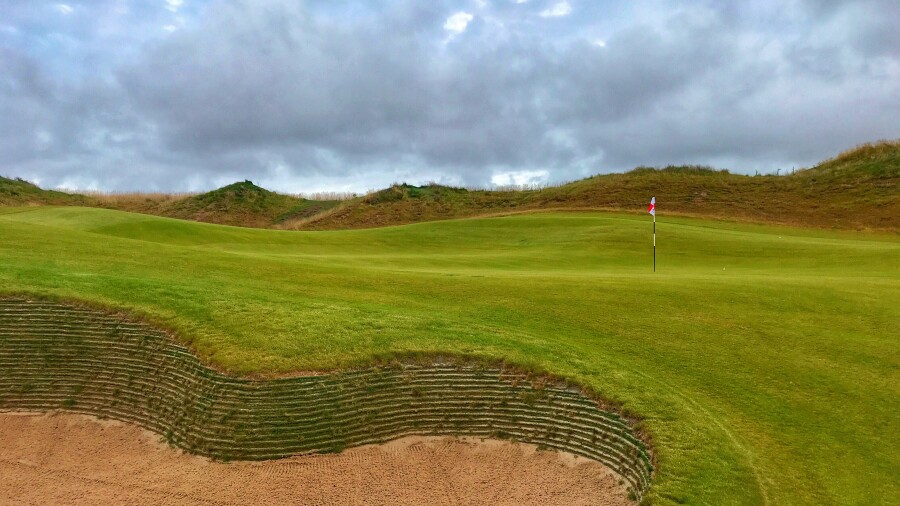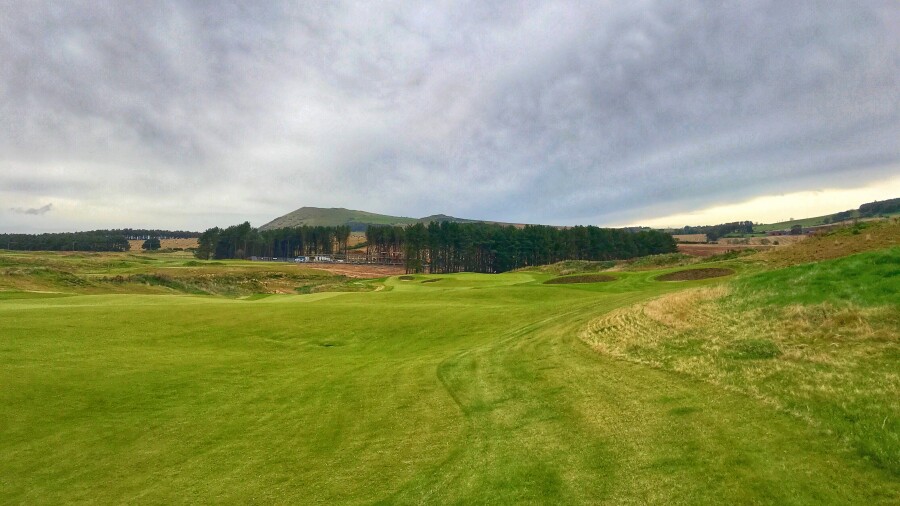The Kingdom of Fife is an ancient place for golf. People have chased birdies and double bogeys there since the 15th century, and both the town of St. Andrews and its Links Trust’s Old Course are pilgrimage sites for any golfer.
As soon as the Auld Grey Toon heaves into view along the North Sea coastline, the hairs stand up on the back of the neck of any golfer with even half a sense of history. Golf is so entrenched in life around here that from our 21st century perch, it is hard to imagine the ancient links here were ever new. Even Kingsbarns, the upscale modern links that turned 20 this year, seems like it has always been part of the St. Andrews golf landscape.
That is precisely the hope for the developers of Dumbarnie Links, a new-build course that will take its first paying guests in May 2020. Located on a south-facing slope above the Firth of Forth, Dumbarnie is a 30 minute ride from St. Andrews proper, placing it directly between the links of Lundin Golf Club and The Golf House Club, Elie.
Dumbarnie was designed by 74-year old architect Clive Clark, a Brit with a practice based in the California desert but with ties to Scotland and a career-long dream to design a links course there. Clark was instrumental in raising more than $17 million in capital for the venture from a dozen and a half investors, many of whom are from the Palm Springs area.
Because the site comprised former farmland, not strict linksland, the Landscapes Unlimited construction team under Clark’s direction moved some 500,000 cubic yards of earth, creating a striking dunescape that funnels the golfer up and down some 80 feet between the clubhouse site and the course’s lower holes, which sit astride natural, protected dunes of special scientific interest. The Firth is in view the entire round.
Moving between, around and over Clark’s manufactured ridges sit 18 sculpted holes that, due to the site’s large size, enjoy a level of separation from one another that makes the course different from most others in the region. In this regard, Dumbarnie is as reminiscent of Whistling Straits as it is of courses nearer by. But unlike Pete Dye’s Lake Michigan masterpiece, Dumbarnie enjoys the consistently firm turf that makes playing golf in Scotland such a joy. Its green complexes, though at times elevated, encourage run-up play, especially downwind.
The front nine at Dumbarnie is excellent. The opening downhill par 4 heads straight at the Firth of Forth and plays over a burn, immediately whetting the golfer’s appetite for the test to come. The rest of the side has a fun variety of hole lengths and green shapes, from the two-tiered punchbowl green complex at the reachable par-5 second hole to the short par-3 eighth, which is no doubt inspired by Royal Troon’s Postage Stamp. Its subtly convex green tends to shrug away misdirected short iron shots.
One controversial feature among early preview players at Dumbarnie is a pond just past the midway point on the long par-4 10th. It is not the type of thing one would expect to see on a links course, but it is actually a naturally-occurring water hazard. There are several springs that run down through the site, and this is simply where one of them collects. The pond also has strategic value, adding stress to the second shot on the hole, especially after a drive that misses the fairway.
It will be interesting to see how golfers react to a few features on the back nine, and how the course’s overseers react to that feedback. On the short par-4 11th, the par-5 15th and par-4 17th, Clark seems to have taken a kitchen-sink approach to the design, dotting the playing field with several sod-walled pot bunkers as well as rough-edged sandy blowouts (a theme throughout the course). These features are plenty navigable in calm conditions; it’s when the winds pick up that management could potentially hear some horror stories. Dumbarnie’s fairways average 45 yards wide, though, and golfers will be grateful for that space when the wind blows.
Like Kingsbarns, Dumbarnie will operate as a pure daily-fee concern. Guests will not have to plan around members’ medals or limit their prospects for a round to certain days of the week. And like Kingsbarns, Dumbarnie will command a hefty green fee: £235 for guests from day one. However, the investor group, as well as Dumbarnie’s day-to-day management team from OB Sports, are eager to live in harmony with the local golf community, so Fife residents will pay less than £100 to play. Furthermore, OB Sports plans to hold occasional locals-only golf days where green fees will be under £50. A robust caddie program is also in the plans.
In addition to Clark, the task of making sure the new course ultimately lives up to its billing falls to an interesting cast of characters. One is Anthony Lindsay, Lord Balniel, on whose 6,000-acre Balcarres Estate the course has been erected. He is the son of the 28th Earl of Crawford, and his family’s estate house just a few miles inland from Dumbarnie dates to 1580. Though not an especially avid golfer himself, Lord Balniel recognized the potential of the Dumbarnie site to produce high-quality golf and has been instrumental in guiding its progress.
Malcolm Campbell is a local legend, having written several books about the game, including The Scottish Golf Book, The New Encyclopedia of Golf and True Links, which he co-authored with LINKS Magazine's George Peper. A resident of the town of Upper Largo, little more than a mile from Dumbarnie, Campbell would often walk and drive by the site, convinced of its potential to be home to a first-rate golf course. When the opportunity arose, he helped bring the idea to Lord Balniel and Clark. If the rest is to be history, as they say, then Dumbarnie should find a unique and honored place in the St. Andrews golf scene.





















Not sure southeast Scotland needs another expensive golf course, especially one that is not a true links course. If they're that sure people will like it they should encourage people to play it the first year by offering reasonable greens fees. But I hope it is a great course that I will want to play.
John--
After two rounds I think it's a very good course and complimentary to the older links in the area. The land it was built upon was flattish/sloping farmland but they made it linksy in look and, more importantly, firmness. It's all fescue and plays nice and bouncy, just like you'd want it to.